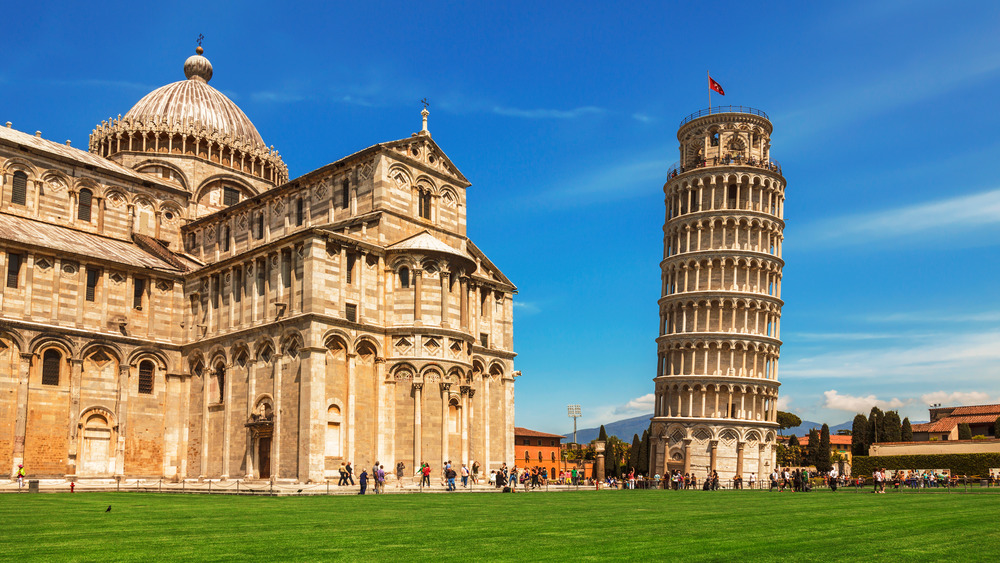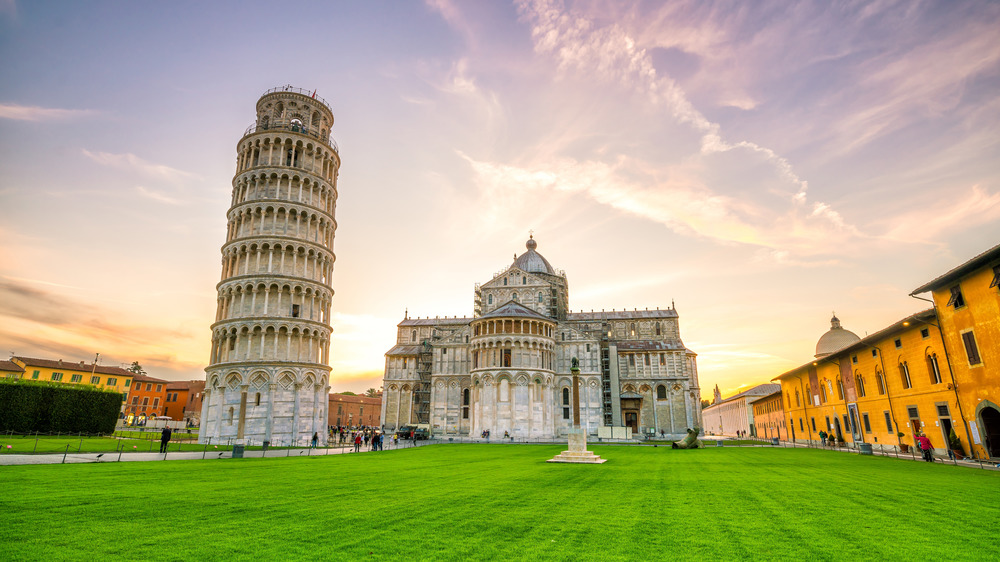The Real Reason It Took 200 Years To Finish The Leaning Tower Of Pisa
The Leaning Tower of Pisa is iconic. For hundreds of years, the Italian landmark has awed and beguiled the world and has consistently drawn in tourists from numerous other countries and continents just to come and look at it. Originally built just to be a bell tower for the Pisa Cathedral that it stands behind, the tower's very apparent lean has made it one of the most well-known and beloved structural oddities in the entire world. Its structural strangeness has also made it, unsurprisingly, a go-to photo-op spot for tourists.
For centuries, people have been asking questions about the Leaning Tower of Pisa, including how it was built, what caused it to lean in the first place, and how it has been preserved and maintained in the many years since its original construction. But what most people may not know is how (and why) it took nearly 200 years for construction on the Leaning Tower of Pisa to be completed.
Why it took so long to finish the Leaning Tower of Pisa
Construction on the Leaning Tower of Pisa began in 1173 and continued fairly smoothly for five years as the tower's builders worked on its first three stories. However, according to History, it was after the tower's third story had been completed, that the tower's structural issues became apparent. The tower had begun to tilt south, as a result of the tower's foundation settling unevenly in the ground, which was itself a combination of sand, clay, and shells.
The tower's construction was then delayed for nearly a full century after that, due to a war between Pisa and Genoa. When work on the tower began again years later, all attempts to fix the tower's ever-increasing lean were unsuccessful. Its initial construction was finally completed in 1370, but the tower only continued to lean more and more throughout the following centuries. In 1990, Italy closed the tower to the public and began working to stop and correct the tower's worsening lean. Thanks to the country's work, it is now believed that the Leaning Tower of Pisa will continue to (crookedly) stand for at least another 200 years.

